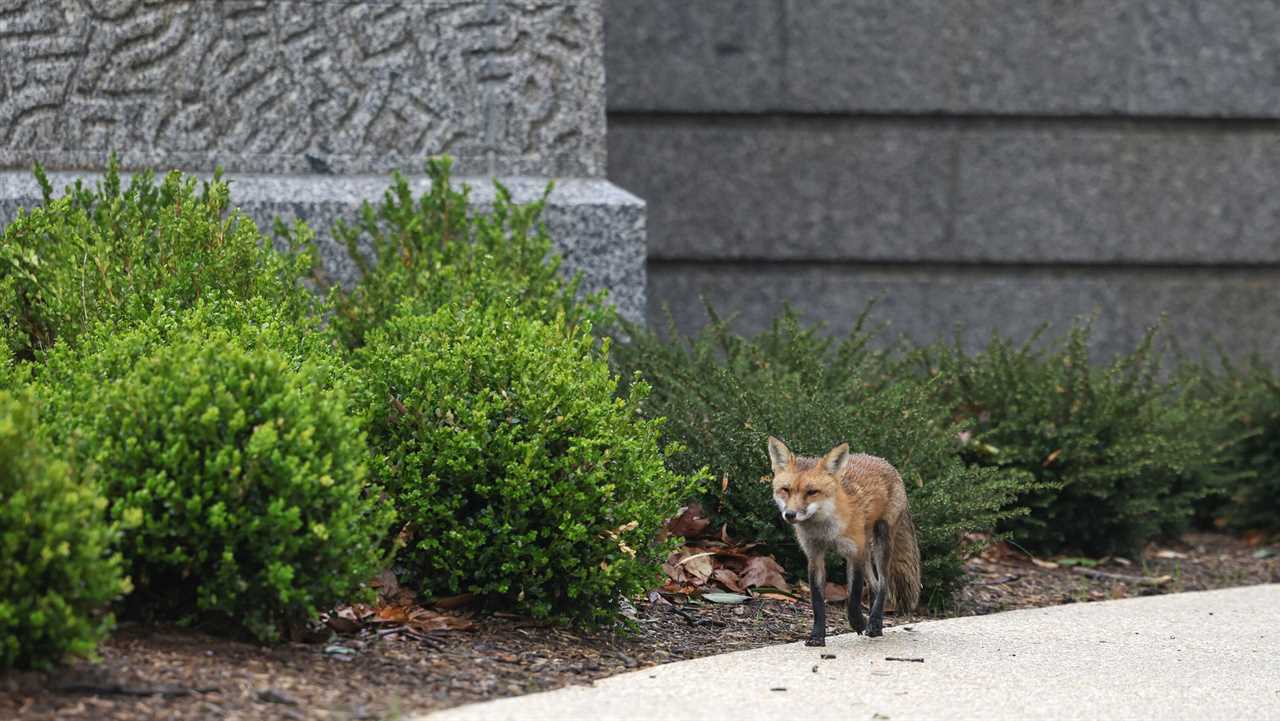
WASHINGTON — The three children of a fox captured on the grounds of the Capitol have been euthanized because they were exposed to their rabid mother, city health officials announced on Thursday, in yet another tragic turn to the canine saga that has gripped Washington.
“Three fox kits were recovered from the den site of the female fox who tested positive for rabies,” the statement from D.C. Health said. “Since the mother tested positive for the rabies virus and the kits could have been exposed during grooming or other means, they were no longer able to be safely rehabilitated and were humanely euthanized.”
The announcement added another grim revelation to the tale of a wild red fox who had roamed the grounds of the Capitol and briefly captivated those who live and work around Congress. Lawmakers, aides and journalists had initially reacted with bewilderment and admiration to the presence of the animal — and then with sorrow and alarm when the Capitol fox was euthanized so she could be tested for rabies.
The late vixen’s children — known as kits — were found and captured on Wednesday, around the same time as their mother was caught. A statement from D.C. Health had said that officials were determining what to do with the youngsters.
Then came the announcement that the mother had tested positive for rabies. It set off a flurry of speculation over who may have been exposed to the deadly virus. The fox bit at least nine people on Capitol Hill on Tuesday, and possibly a congressman the night before. The attending physician of Congress did not respond to requests for comment.
Representative Ami Bera, a California Democrat who had reported being bitten by a fox near the Capitol on Monday night and was treated soon after, said on Wednesday that he felt “healthy” and was back to work.
Ximena Bustillo, a food and agriculture policy reporter for Politico who had been bitten on Tuesday, said on Wednesday that she had received an initial round of treatments for rabies.
D.C. Health officials did not address questions about the other bite victims, or if any additional measures would be taken for the local fox population. A previous statement from the health agency noted that it “will not be doing a roundup of healthy foxes in the area,” but that was before the captured fox turned out to be rabid.
There is a long history of small animals roaming the grounds of the Capitol. There have been several recorded incidents of raccoons lounging on the Capitol dome. One such raccoon was captured in 2015, lured into a waiting cage with tuna fish, according to the Architect of the Capitol’s office.
The omnipresent squirrels of Washington were introduced to the Capitol grounds as early as 1899 by Elliott Woods, who was later officially appointed the Architect of the Capitol. (While the C.D.C. notes that squirrels have not been known to transmit rabies to humans, D.C. Health has pointedly reminded residents not to feed the squirrels.)
Mr. Woods also considered buying a flock of sheep to set loose and graze on the Capitol grounds. In the end, he turned down an offer from a Virginia farmer in 1921 — most likely to the eternal gratitude of today’s occupants of the Capitol.
“The experiment was tried out in the last few years around the White House and the monument grounds,” Mr. Woods wrote in reply, suggesting that it did not go well.
Other, more recent experiments in supporting the local wildlife have met with more success. The Architect of the Capitol and City Wildlife built duck ramps in 2017 to help ducklings who had taken up residence in the Capitol reflecting pool get in and out.
In January, a snowy owl that was seen perched on Senate buildings became a minor celebrity on Capitol Hill, where residents and congressional staff tracked its movements, hoping for a glimpse.
And wild foxes have previously beguiled Congress (though lacking the horrifying development of a rabies diagnosis), with earlier iterations of the “Capitol fox” appearing as recently as 2014.






